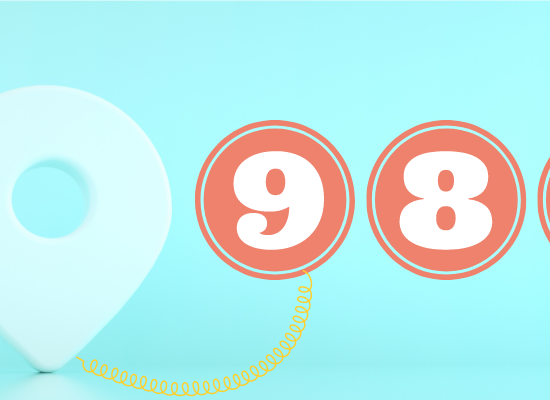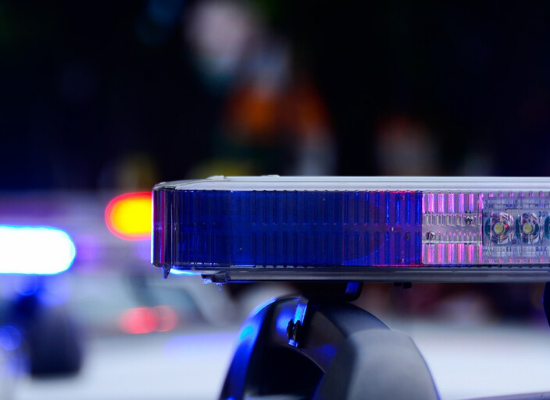
Stephanie Hepburn is a writer in New Orleans. She is the editor in chief of #CrisisTalk. You can reach her at .
Nearly a year before the Covid pandemic began, behavioral health crisis professionals became physically co-located at the Tucson Police Department’s 911 call center. However, in March 2020, as communities started to implement physical distancing requirements to halt the spread of the virus, Johnnie Gasper and his colleagues were uncertain what to do. “Law enforcement dispatchers are continuing to operate on the call center floor, should we?” they asked. Gasper is the director of Justice and Crisis Systems at Arizona Complete Health, the state’s contracted regional behavioral health authority in central and southern Arizona. The state, through Medicaid, funds regional authorities to establish contracts for and oversight of crisis services.
While 911 dispatchers have been able to reroute calls to the Pima County Crisis Line for the past six years, it wasn’t until April 2019 that behavioral health call responders, staffed by Envolve Health, were embedded on the 911 operations floor and integrated with the public-safety answering point’s computer-aided dispatch system, commonly called CAD.
Gasper and his team slowly rolled out the program. “We started by reviewing 911 run cards,” he says. Run cards are an essential triage tool used by 911 operators and dispatchers to determine call level and appropriate response, whether police, fire, EMS, or behavioral health. Gasper and his team sat down with the Tucson Public Safety Communications Department, which operates 911, and the Tucson Police Department to determine what calls with a behavioral health nexus the integrated crisis professionals could divert. Developing clear protocols allowed call counselors to quickly start onboarding more 911 calls. “We began by pulling low-level calls from the dashboard,” he says, “like a person experiencing anxiety or reporting depression who needed a telephonic or in-person response.”
Gasper points out that many 911 callers aren’t people in behavioral health crisis but, instead, third-party callers reporting “strange behavior.” “In most cases, the caller isn’t at-risk,” he says, “and the person they’re calling about has a quality of life or behavioral health need.” Call counselors can quickly identify these types of calls through the dashboard and dispatch a mobile crisis team to assist the person. The diversion is a win-win, notes Gasper. “The person receives appropriate care, and we take a call off of law enforcement’s plate,” he says. The mobile crisis team can often respond much faster than police can to a low-level public nuisance call.
Co-location, notes Gasper, has fostered a vital shift in coordination between 911 and behavioral health crisis responders. “Working together has allowed us to establish and update dispatch protocols, including when we respond jointly,” he says. For example, law enforcement will respond if a caller is actively suicidal but so too—depending on joint dispatch protocols—will a mobile crisis team from either Community Bridges or Community Health Associates, Arizona Complete Health’s local providers for mobile crisis services.
The piloted co-location program quickly revealed itself to be fruitful; the behavioral health crisis professionals deflected calls and cleared them from the system, leaving fire, police, and EMS to focus on crises within their scope of expertise. “We help them have a faster response to community crisis events,” says Gasper, “and as the behavioral health authority in the region, the partnership allows us to serve our membership better.”
Because the co-located behavioral health staff were diverting crises sooner, Gasper and his colleagues hypothesized that fewer first responders in the field would request mobile crisis assistance. “That didn’t happen,” he laughs. Instead, call counselors were diverting people from a traditional 911 response who had not yet, or rarely, engaged with the behavioral health crisis system. “It illustrates how vast the gap has been at the 911 entry point,” he says.
When call counselors do need to dispatch a mobile crisis team, they tap into the crisis line’s dispatch optimization tool (DOT for short). The app is GPS-enabled mobile phone software that allows call takers to see the location and status of each mobile crisis team and deploy one that’s available and closest to the person in crisis. In addition, teams are color-coded: green means a team is available, yellow is when a team is activated and en route to a call, and gray is offline. “Once at their destination, the team pushes the ‘on scene’ button,” says Gasper. This allows the crisis line to track travel and response times.
The mobile teams are also connected to the crisis line’s electronic health record, giving them critical information on the person in crisis. Once on scene, the team updates case details, which the crisis line can review in real-time, allowing for faster care coordination. Integration doesn’t stop there—every 24 hours, the record generates a report that goes out to all outpatient providers. “That way, a provider can see if an incoming patient has recently experienced a crisis,” says Gasper.
While behavioral health crisis responders are linked to the CAD and crisis line systems, 911 can’t dispatch a mobile crisis team directly. “We did explore connecting 911 to our crisis line system,” says Gasper, “but it presented inherent challenges since the app provides access to our electronic health record’s clinical information.” Instead, Arizona Complete Health focuses on identifying calls that 911 can divert. That means continually working with first responders on public-safety answering point call codes. “It’s a work in progress,” says Gasper.
The Tucson Public Safety Communications Department 911 call center has long had a behavioral health code, but behavioral health calls are rarely called in as such and thereby are often labeled with codes fraught with ambiguity. As communities across the United States dig into the black box of 911 call centers—how they code and dispatch calls, and how to divert on the same or compatible platforms—they’ve quickly realized the lack of uniformity between and within PSAPs. For example, a study analyzing 3.4 million 911 calls in the Atlanta metropolitan area revealed that more than 18% of 911 calls in the city were behavioral health or quality of life concerns that could have been diverted from a law enforcement response. Most were coded as “suspicious person,” “directed patrol,” “criminal trespass,” “street/sidewalk hazard,” “person injured/down,” “demented person,” or “public indecency.”
In May, Dr. Rebecca Neusteter shared with us that a multicity 911 analysis she did with former colleagues at the Vera Institute of Justice—which included datasets from the Tucson Police Department’s public-safety answering point—revealed that call codes are often both over- and under-specific. For example, she pointed to a PSAP in New York where dispatchers had 150 call codes to choose from, yet the one they most often used was “other.” Furthermore, two call takers aren’t likely to classify calls the same way because of insufficient standardization. Dr. Neusteter is the executive director at the University of Chicago’s Health Lab and former policing program director at the Vera Institute of Justice.
What perpetuates the issue, notes Gasper, is when there’s no feedback loop between 911 and behavioral health crisis responders. That’s why his team meets with 911 staff twice a month to discuss calls, mobile dispatch, overlap data, and identify trends. “For example, if we notice that 30% of calls 911 operators divert to us are people experiencing anxiety,” he says, “we’ll ask them what those calls looked like on their end.” The behavioral health crisis line’s electronic health record system tracks all calls diverted from 911 and those transferred back to 911. “We don’t usually require first responders for immediate assistance, but it’s critical to know when it does happen,” says Gasper. The system also tracks when first responders and mobile crisis teams are jointly dispatched, primary and secondary presenting symptoms, acuity scales for substance use and psychosis, and when the person is considered a danger to themself or others.
Gasper and his team don’t yet have access to the entire 911 call dataset, which would allow them to examine what calls, and corresponding call codes, didn’t but could have transferred to behavioral health call responders. “That’s why our collaborative meetings are so important,” he says. Diversion discussions include first responders, call counselors and other crisis line staff, mobile crisis teams, outpatient providers, court attorneys, and crisis facility staff. The meetings have become increasingly nuanced as the partnership strengthens and 911 dispatchers and law enforcement know more about call types the call responders and mobile crisis teams have the expertise to take. “Month after month,” he says, “we’re testing the waters and adding new call types and presentations.”
The partnership has also helped Gasper and his team determine baselines for people who outreach 911 versus the crisis line. For example, more calls that come through 911, as opposed to the crisis line, result in the dispatch of a mobile crisis team. “People often think that suggests that those calling 911 are experiencing higher-acuity issues,” says Gasper, “but we found that wasn’t true.” In fact, the stabilization rate after a mobile team interfaces with a person is the same, regardless of if they called 911 or the crisis line. Stabilization rates during the pandemic have hovered around 85%. Gasper notes that more 911 calls (roughly 60% of the 911 calls they take) result in a mobile crisis team dispatch because, when people dial 911, they expect an in-person response.
Amidst the Covid emergency, there have been increased demands on 911 and the crisis line. “Fewer people have been able to engage with their primary care or behavioral health providers,” says Gasper. Tracking shifts in calls, call codes, presentation, and the number of mobile crisis teams dispatched help the 911-crisis line partners rapidly identify gaps and build out supports. “These are the indicators,” he says, “that let us know how we can have a larger impact as the program grows.”
When Gov. Doug Ducey issued a statewide stay-at-home order in March 2020, Gasper and his colleagues were torn. They worried that temporarily changing from physical to virtual co-location could hinder the program. “We moved all of our crisis line and mobile teams out of congregate settings so that we could continue serving people in the community,” he says. With only two dedicated crisis professionals trained in CAD, the program would be crippled if one or both fell ill. “The last thing we wanted, particularly as first responders and hospitals became increasingly overburdened,” says Gasper, “was for people not to have access to our services.”
Initially, with the shift to virtual co-location, 911’s utilization of the behavioral health call staff plateaued. “Call transfers remained stable,” says Gasper. “However, they weren’t sending us more calls.”
To support the transition from physical to virtual co-location, Gasper and his colleagues generated a transfer line, a toll-free number that links 911 directly to the two dedicated CAD-trained crisis professionals. “We wanted our first responder partners at 911 to be able to talk, work with, and transfer to our team, even if no longer in the same room,” he says. As a result, by May 2021, there was an increase in 911 calls transferred to the behavioral health call responders, a jump of 117% since October 2020.
Creating the dedicated line provided another benefit: more call takers. Crisis line leads are now trained to pick up calls from the public-safety answering point if the CAD-trained crisis professionals are already on 911 calls. “This has allowed us to take more calls,” says Gasper. Arizona Complete Health plans to increase the number of call takers on the crisis line who are CAD-trained. “It’s an in-person training,” he points out, “so we’re waiting for the pandemic to calm down a bit.”
While Gasper and his team plan to return to physical co-location at the Tucson public safety answering point, what virtual co-location offers is scalability. “We can make it fit any jurisdiction, whether rural, suburban, or urban,” he says. For example, there might not be a sufficient local workforce in smaller counties to have behavioral health call takers physically co-located at each PSAP, yet integration is just as dire. “We can have behavioral crisis professionals with CAD-access virtually co-locate anywhere,” he says.
Co-location, virtual or in-person, notes Gasper, is an opportunity communities should be aware of as they seek ways to divert crises from traditional first responders and redesign their crisis systems in anticipation of 988. Telecom companies must make the three-digit number for mental health, substance use, and suicide crises live by July 16, 2022. “Both co-location formats have allowed us to work seamlessly with our first responder partners,” he says, “and better serve people in crisis.”
This article was originally published on October 26, 2021.









